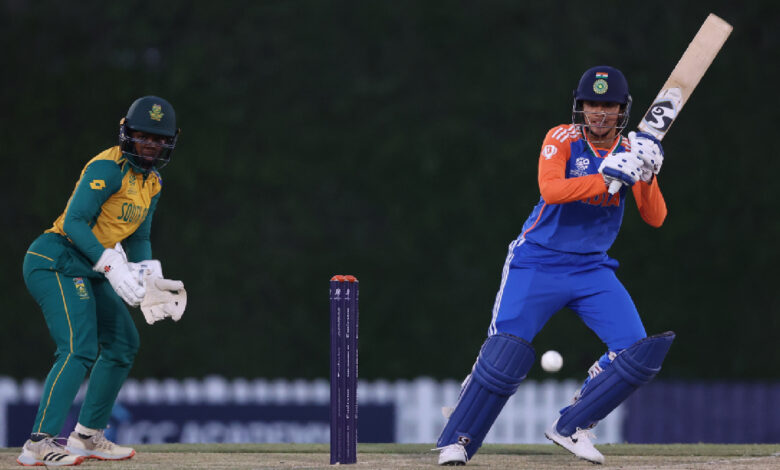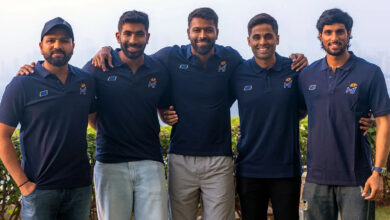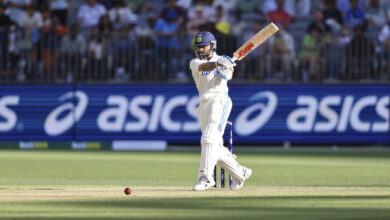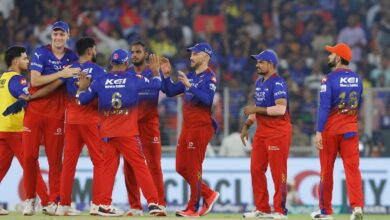The makings of Smriti Mandhana: From Sangli to one of the world’s best, and India’s T20 World Cup mainstay | Cricket News

Smriti Mandhana remembers growing up in a cricket-obsessed household, thanks to her father’s love for the sport. Her elder brother too harboured ambitions for playing for the country and it was following him to practice sessions that she considers to be her earliest memories. But Mandhana was slightly different… her obsession in the early days wasn’t about cricket itself. It was just about batting. All she wanted to do was hold a cricket bat and hit balls as much as she could.Today, that batting-obsessed kid is India’s biggest hope for ending the long wait for an ICC title, at the T20 World Cup in UAE. Still only 28 and already playing in this tournament for the 6th time, Mandhana has come a long way in her career. From Sangli, Maharashtra to the biggest stages of the world, where she – often uncomfortably – is under the spotlight.
“I used to joke at my home that I picked up cricket when I was in my mother’s stomach,” Mandhana told the RCB podcast this year. “For me, more than cricket, it was an obsession with batting. The whole thing about cricket being a career kicked in only much later, when I was around 9-10 or so but all I remember growing up is loving batting.”
Mandhana belongs to the l of international batters who make left-handed batting sometimes look like elevated art. But a natural right-hander, Mandhana knew only how to pick up a bat and wield it because of her brother being a left-handed batter. It was just a practical choice for her and it stuck.
Once her brother moved on from cricket though, Mandhana felt it was on her to fulfill her father’s dream of having an Indian cricketer in the household. While her father and brother were big cricketing influences, it was Mandhana’s mother who gave her the direction. “Do whatever you want to do… but do it all the way, put in the most hard work possible.”
While conventional wisdom – and multiple stories we have heard in Indian cricket – dictates that there are better chances of succeeding if you move to a bigger cricketing center early, Mandhana’s perspective is different. “The infrastructure is for sure much better in metro cities like Mumbai and Pune, but the kind of attention I got in Sangli played a big role in my growth,” she said. “The number of balls I could play in practice, the personalised coaching… it felt to me like the whole of Sangli cricketing fraternity wanted me to play for India.”
In her early days, Mandhana wanted to just play the cover drive all day. Her game has grown in the last few years, but that remains her signature. There were times she watched Kumar Sangakkara’s videos on loop, just to feel better after a bad day. And there was a bat signed Dravid that was originally meant to be a souvenir but ended up being a source of a bagful of runs on the domestic circuit before she had to eventually move on from it when it broke.
Mandhana’s prolific batting got the attention it deserved and she soon found herself playing as a kid in much higher age-groups, often with players 3-4 years older than there. “I used to just play very few shots. Maybe flick and cover drive. I don’t think I used to even play a pull shot.”
Mandhana of the present, however, is a more evolved version. The touch and elegance of her offside play have stayed on, but there was an epiphany in 2017 that she had to improve. Seeing the number of sixes hit at the 2017 World Cup, and in general the higher scores that were becoming the norm, it dawned on Mandhana that she needed more weapons. “I remember the only thing I told my coach then was that I needed to get the power game and lofted shots going. In the two months after that, we placed markers from 50m to 80m, gradually developed that, and last few years I have been able to improve,” she said.
Her strike rates reflect that too, as she has opened up her leg-side game more. She always had a good pull shot (even if sometimes it leads to her downfall) but the aerial shots through long on and midwicket regions are more prevalent now. Even with the pull, in her recent international outings, she has been able to access the region in front of square over midwicket. Her weakness against spin remains a concern but bowlers can’t just target her outside off stump constantly anymore, when she moves across to go the other way.
Off the field, the inaugural season of WPL was also a wake-up call for her, as a batter and leader. Struggling with her form like we have rarely seen in recent years, Mandhana had to reevaluate how she went about expressing herself better to her teammates as well. And in 2024, a more confident, self-aware version not just found her batting form back, but also stepped up as the captain to finally help Royal Challengers Bengaluru win a title they had been craving for.
But even during the presentation ceremony that night, Mandhana was asked where the WPL title ranked in her l of achievements. She took a couple of seconds to gather her thoughts, made sure she conveyed how important the title was for RCB as a franchise but signed off saying, the World Cup is still the ultimate goal.
And if India (and herself) are to fulfil that dream, she’d need to be at her absolute best.







